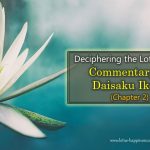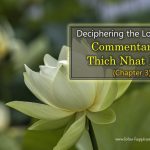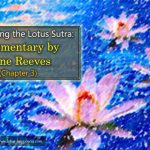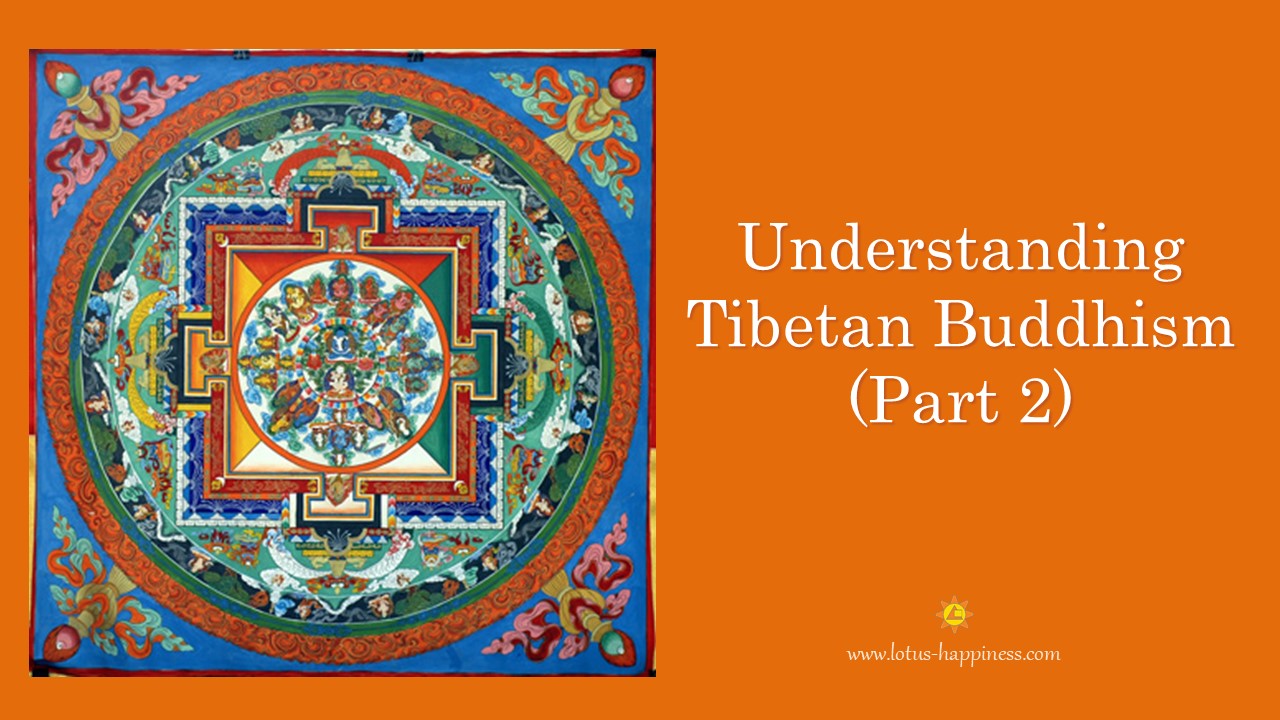Deciphering the Lotus Sutra: Commentary by Daisaku Ikeda (Chapter 3)
Simile and Parable: Compassion and Wisdom Distilled to Their Fragrant Essence
#1
The heart of the [Lotus] sutra is compassion, a determination to save all living beings, a profound empathy that feels the sufferings of other living beings as one’s own.
#2
The great white ox cart is none other than the Lotus Sutra itself. Its substance is the wondrous life of the Buddha, the great life of Nam-myoho-renge-kyo. That is why the Daishonin writes, “The great white ox cart in the Lotus Sutra is the vehicle that I and other votaries of the Lotus Sutra are able to board” (GZ 1584)
#3
Nichiren Daishonin quotes this passage and adds his own comment: “[The Buddha’s] ‘great compassion’ is like the mercy and compassion a mother feels for her child” (GZ, 724). It is deep compassion that gives birth to these skillful parables. He further cites the words of Tien Tai’s disciple Chang-an: “One who rids the offender of evil is acting as his parent.” (GZ, 721)
#4
The parables are not preached ‘in accordance to the mind of living beings,’ matching their capacities. They are preached ‘in accordance with the Buddha’s own mind,’ to reveal that mind and to draw living beings toward it. The Daishonin writes: “But the Lotus Sutra is an example of preaching in accordance with the Buddha’s own mind, because in it the Buddha had all living beings comply with his own mind” (WND, 969)
The parables of the Lotus Sutra are taught to make the minds of living beings one with the Buddha’s mind.
#5
Simply hearing the Buddha’s skillful parables and similes and declaring, “Yes, I understand!” do not constitute a full understanding. Truly profound understanding results in a transformation of one’s entire being. By its very nature, understanding entails a transformation. As one rises to a higher state of being, wisdom is born.
Shakyamuni used parables to reach all living beings. His purpose was to open the path of Buddhahood to all without exception.
#6
In one of his commentaries, the Great Teacher Dengyo writes, “These seven parables are none other than the entity of the Law, and the entity of the Law is none other than these metaphors and parables” (WND 426). This means that the Lotus Sutra parables are the very heart and mind of the Buddha.
In “The Entity of the Mystic Law,” the Daishonin elucidates that Nam-myoho-renge-kyo is the ultimate expression of this principle that the parables of the Lotus Sutra are identical to the entity of the Law.
#7
Our individual experiences of triumph over our problems give courage and hope to many others. Our personal victories, in other words, become parables expressing the power of the Mystic Law.
#8
Each individual experience is a parable of the all-pervading Mystic Law. And the discussion meeting, based on sharing such personal experiences, is a contemporary representation of the “Simile and Parable” chapter, a modern version of the seven parables of the Lotus Sutra, an infinite treasury of parables.
Source: The Wisdom of the Lotus Sutra – Volume 2












